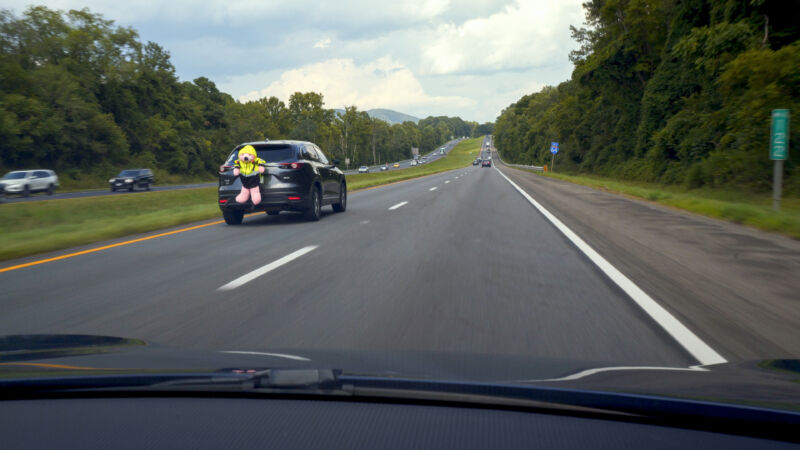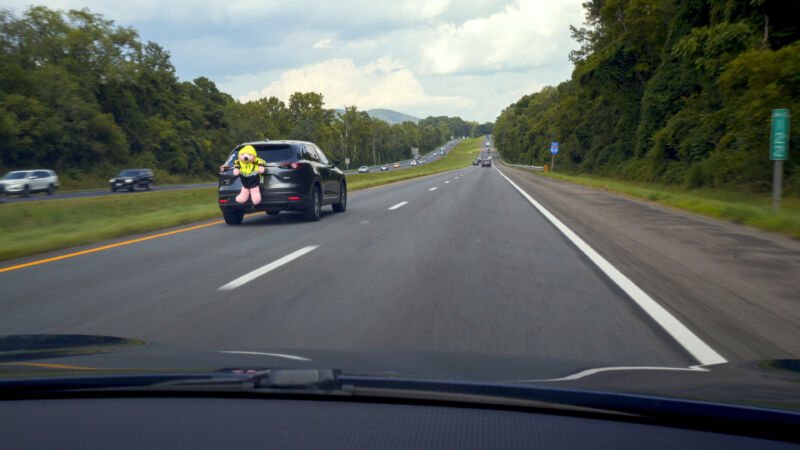
Enlarge / Would you notice if a large pink bear in a high-vis vest drove past you on the highway? (credit: IIHS)
Depending on your perspective, the advanced driver assistance systems (ADAS) that are appearing in more and more new cars are either a panacea for an epidemic of distracted driving or a reaction to a driving culture that doesn’t take seriously enough the act of controlling thousands of pounds of high-speed machinery. It doesn’t help that there’s widespread public confusion, particularly when it comes to the one-two combo of adaptive cruise control and lane keeping and whether or not they allow a driver to nap on the freeway.
Now, a series of tests involving a large pink teddy bear, wearing a high-vis vest while strapped to the back of a moving car, has shown that using adaptive cruise and lane keeping—known in industry jargon as “SAE Level 2 automation”—can help increase a driver’s situational awareness. However, the effect required some familiarity with such systems. The study was performed by the Insurance Institute of Highway Safety and published earlier this month.
You’re adapting my what?
When activated, adaptive cruise control uses forward-looking radar to maintain a specific distance to a vehicle in the lane ahead, slowing down or speeding up (to a maximum of whatever speed cruise control was set to) as necessary. Lane-keeping systems use forward-looking cameras to detect the lane markings on a road to keep the vehicle between them, and when both are active together, the vehicle will do a pretty good facsimile of driving itself, albeit with extremely limited situational awareness.





